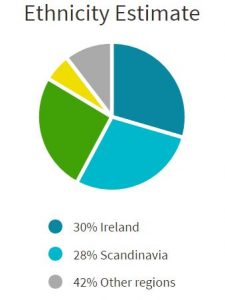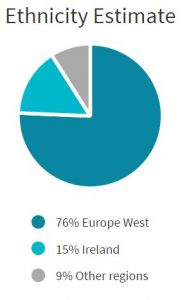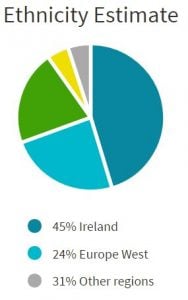This week’s chat was run by those very knowledgeable about Irish land records particularly the Griffith Valuations. I have not used them yet, but now I am finding more Irish on my father’s line maybe the following will come in useful for future research.
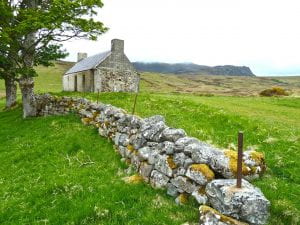
What are the Griffith’s Primary Valuations (GV)? How and why have you used them to find your Irish families?
For those looking for some background to Griffith’s Valuation – this and the related articles are useful: askaboutireland.ie/reading-room/h…
Why is GV important? Read this article by Ask About Ireland. askaboutireland.ie/reading-room/h…
For those who have not used GV or need some free tutorials, there are some excellent ones on YouTube and some specific to several Counties too
Griffith’s Valuations are/were a multilayered response to determine the rateable value of land and property to share the cost of the poor law support. It involved calculating the size, productivity and estimated rates on any property.
Critically, GV offers us an alternate insight into possible ancestral families during the mid 19th century especially given the absence of census records for that period. We will have to work a bit harder than we would with census data.
the key thing about GV from a #familyhistory POV is that it lists most land-occupying residents of the island of Ireland between 1847 to 1864…tenants and owners. It does not include whole families.
What I most want to know about Griffiths Valuations is whether the owner or renter of the property is named?
The occupier (renter) is named, and the person who rents the property to him/her is named, not always the owner
The immediate lessor is mentioned and then the person they rent to. The lessor may not be the absolute owner because they in turn may lease from higher up the chain. If you follow the overall links, and other sites, you can usually work it out.
For me Griffiths has been invaluable, it’s basically a mid-19th-century, head of household census, covering 70% of the population.
I found my 2xgreat grandfather on them and have used them to try and work out my rather unknown Ulster family, the one where I started with one person born in Castleblayney.
Griffith’s Primary Valuation of Ireland is the major part of a comprehensive land and property survey, for the purpose of levying taxes. I’ve found it indispensable in tracing my Irish families.
When I worked out my Riordan townland I used the mapping feature with Griffiths. I could go from the property number on an old map, to slide and work out where it fitted on a new map.
Exactly! Although it also works in reverse if you’re not too familiar with the geography.
It took quite a while with enlarging the map etc but eventually I could find it quickly with the curve on the roads.
There’s so much more to GV than a list of names: there’s revision lists (the amended valuations over time), maps, field and quarto books, tenure and house books (how I wish for these!). census.nationalarchives.ie/search/vob/hom…
a crucial thing for me is that they are limited for urban ancestors. I have found none of mine in it.
But you should still check it out, some of my Dublin city ancestors are listed, just not the ones who live it tenement houses.
Possibly because if they lived in tenements they were sub-tenants not the primary renter? I have had more luck with villages
I agree with @Rosiemonstre about GV’s limited used for urban areas, although occasionally this has been useful as it can demonstrate somewhere that has been urban for years wasn’t when the records started!
I watched a really informative webinar at ‘Ireland Reaching Out’ about Griffiths Valuations and Cancellation books … some time ago now. I think the link I posted may be a follow up article to that webinar
A1: The name listings by townland are informative but be aware that all those numbers and letters have significance. Here is one of my examples. Be aware there may be more than one entry if they had land and a house separately. #ANZAncestryTime pic.twitter.com/PIvwX3wz5R
— Pauleen Cass (@cassmob) June 22, 2021
My top tip for researching GV for your families is to learn your locations in depth. Where the townland is on a map, what parish or barony it is in. Look it up on a current map or on John Grenham’s website johngrenham.com/places/ or on townlands.ie
Field books are like Swahili to me. I haven’t a clue what they mean in terms of agricultural productivity though the assessable value suggests they weren’t great. Why couldn’t I have had tenure books instead?
I have found GV useful seeing families living near each other, hence helping explaining the subsequent marriages
And witnesses to events, or perhaps a joint inheritance of land due to sharing an ancestor. Proving it is of course another problem!
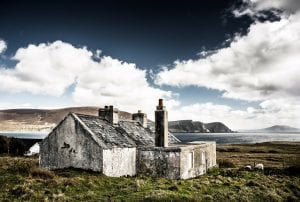
How have you verified that you’ve found the right family on the GV? Do you compare and consult other record sources as well as the GV?
Try to accumulate as much information on your family before you turn to Ireland eg parents’ names, and maybe siblings’ names. This helps to “triangulate” your data and narrow down the options. An unusual name helps too 😉
Cities can be a pain in which to research in many ways. I never trusted the 1851 Dublin census was my bloke until I matched it up with church records.
There are revision lists for the GV currently only online for Nth Ireland through PRONI or for the whole country via Family Search. Latter is in black and white. You need to search by keyword not place. Fingers crossed the digital images are coming!
I believe there is a plan to put the revision books online eventually. They have been slowly computerising them
Always need to cross reference with other records and FAN network, and follow the land holdings through the Cancelled Land/Revision books, to verify you have the right family.
Hopefully the parish registers may overlap with the timeline for the GV – this will help you confirm the correct townland and lead you to the right person on the GV.
Beware! when I started genealogy, I knew where our ancestral home was (we lived there) but the map did not correspond with my ancestor on Griffiths. Properties were renumbered over time, and the attached map was from a later date than the published valuation
That’s a great tip Dara! I’ve been looking at FMP maps and Ask About Ireland maps today – it gets confusing and you really need to understand the geography and location, don’t you.
My understanding is that the numbers and boundaries drawn on the attached maps date to the 1880s and will correspond to the Valuation Revisions of that date, though the maps used are earlier OS ones, so mightn’t include recent buildings. Can anyone confirm?
I thought it was the maps and numbers corresponding to later revisions than the primary valuation.
My reading of the @findmypast GV maps suggests no tenancy numbers. I need to re-read my Reilly.
My understanding (may or not be correct) is that the maps on @findmypast are the originals used by the surveyors. Happy to be corrected if wrong.
Yes, I think so too. The ones on askaboutireland don’t match.
One of my first stops in Dublin is usually to the Valuation Office to follow up more info from the Revision lists…they’re gold!
The marriage record for my great grandma gave her father’s name and occupation. Also found him in Slater’s Directory. Then we found her brother, same name and occupation. Gradually got six siblings.
That’s really cool Margaret. I had the parents + siblings which helped confirm I was on the right track. #Irishfamilyhistory requires mental gymnastics and perseverance.
Mine seem to go to and from Scotland – and every generation some seem to emigrate to the USA. Thousands of DNA matches back to Ulster. Well before GV.
I think there was more seasonal migration than we anticipate as well as permanent. And international migration was a constant among those with enough cash to fund it. They then supported those at home. Fascinating!
Ulster migrants went every year to Scotland for work & then came home – up to relatively recent times.
A2: Maps for GV can be confusing and challenging. This is why you need to be familiar with the location and use the slider for modern to historical map image on Ask about Ireland. The @findmypast are supposed to be the earliest – but can be the most confusing. #ANZAncestryTime pic.twitter.com/6AeRK6xqIv
— Pauleen Cass (@cassmob) June 22, 2021
When using the Valuation prep books, be aware that they often measured in Irish acres and then converted to standard for the published results.
I had planned to visit Ireland last year and a volunteer from @IrelandXO was going to take me to where the land was
We were really lucky when the relieving parish priest took us to meet a relative as he had a different surname but the priest was right. We’d bonded over lives in a missionary country. The GV revisions, and a chat with the bloke confirmed it.
What websites are available to search the GV? What are their benefits or weaknesses?
The most commonly used one is probably Ask About Ireland. askaboutireland.ie/griffith-valua… Downside is it can be temperamental and clunky and for the maps you need to know where you’re looking. Upside: use the books option and the slider for variations.
For Northern Ireland explore the GV and revision books through this site. nidirect.gov.uk/services/searc…
I love the AskAboutIreland website askaboutireland.ie/griffith-valua… – their map facility is the best!! Their maps date later than GV, around 1880s, so for contemporary maps go to @findmypast search.findmypast.com.au/search-world-r…
You do need to know what you’re looking for though Maggie, to narrow down to the correct townland. Best to do some homework first 😉
It can be very buggy & it is not maintained well. #ANZAncestryTime I still use it and FMP mainly.
The only complete version of Griffith’s Valuation with the ORIGINAL MAPS marked to identify the corresponding holdings, is on findmypast.com” (my capitalisation) ref. irishfamilyhistorycentre.com/article/how-to…
Worth pointing out that the maps are listed as a separate record to the valuation on findmypast. search.findmypast.ie/search-world-r…
Ancestry also has search capabilities https://www.ancestry.com/search/collections/1269/
Revision lists enable you to follow the inheritance pattern for a property and lead you perhaps to a cousin today, give clues to approx dates of deaths of ancestors, or who inherited the land – possibly not the eldest son as you might think.
Ah, I only use the ‘askaboutrieland’ ones as FindMyPast doesn’t include maps for the six counties in Northern Ireland, and that’s what I was referring to. So you could well be correct!
Ask about Ireland. failteromhat.com/griffiths.php
This is a useful video from PRONI about searching the Valuation Revision books #ANZAncestryTime https://t.co/MOb5M5lH7j
— Allie Nickell (@alliethinks) June 22, 2021
I don’t use Roots Ireland except when I need to. You need to be sure you check what they have compared to others. Grenham’s site is good for this sort of comparison.
Can you recommend any books/blogs/websites to learn more about the GV and associated records?
#ANZAncestryTime Given yesterday’s conversation about Griffith’s Valuation, this book is a must have https://t.co/DoSQdovUa3
— Tara (Ra Boom di Ay) (@MsFrugalone) June 23, 2021
The Ireland Reaching Out (@IrelandXO ) Website is one of my ‘go to’ places for things Irish … Here is a link irelandxo.com/ireland-xo/new…
this site is useful to learn more about the landed estates in Connacht and Munster, c. 1700-1914 landedestates.ie
Delighted with the redesigned cover from @penswordbooks for my forthcoming book Tracing Your Irish Ancestors Through Land Records – coming soon in September! https://t.co/FF6cgM4QOM #genealogy #familyhistory #Ireland pic.twitter.com/b46ZPCRZ9k
— Scottish GENES (@GenesBlog) June 21, 2021
I highly recommend Frances McGee’s book on the Valuation Office for those who want more detail. fourcourtspress.ie/books/2018/the…
Claire Santry’s Irish Genealogy Toolkit website is a fantastic resource to understand Griffith’s Valuation and associated records: Land and property records including GV https://www.irish-genealogy-toolkit.com/Ireland-genealogy.html
My absolute favourite book for GV research is James Reilly’s book which can be found via Googling.”Richard Griffith and his valuations of Ireland” amazon.com.au/Richard-Griffi… If you can’t beg, borrow or steal it, read this pdf file. leitrim-roscommon.com/GRIFFITH/Griff…
Another useful website which offers further links is: irish-geneaography.com/griffiths-valu…
And a shameless plug for a talk I’m doing on Griffith’s Valuation and related records with @IHGS in October: ihgs.ac.uk/course-tutoria…
Don’t forget valuation and other books @NARIreland genealogy.nationalarchives.ie
Blog posts about using GV
Maggie – also used other Irish resources to help in her search
Margaret – mention of ancestor in the GV
Margy Rose – first success with GV
Pauleen – using GV and and quarto books, Valuation office, Household returns,
Alex – on Irish research
Readers: Have you used Griffiths Valuations or other Irish records?
